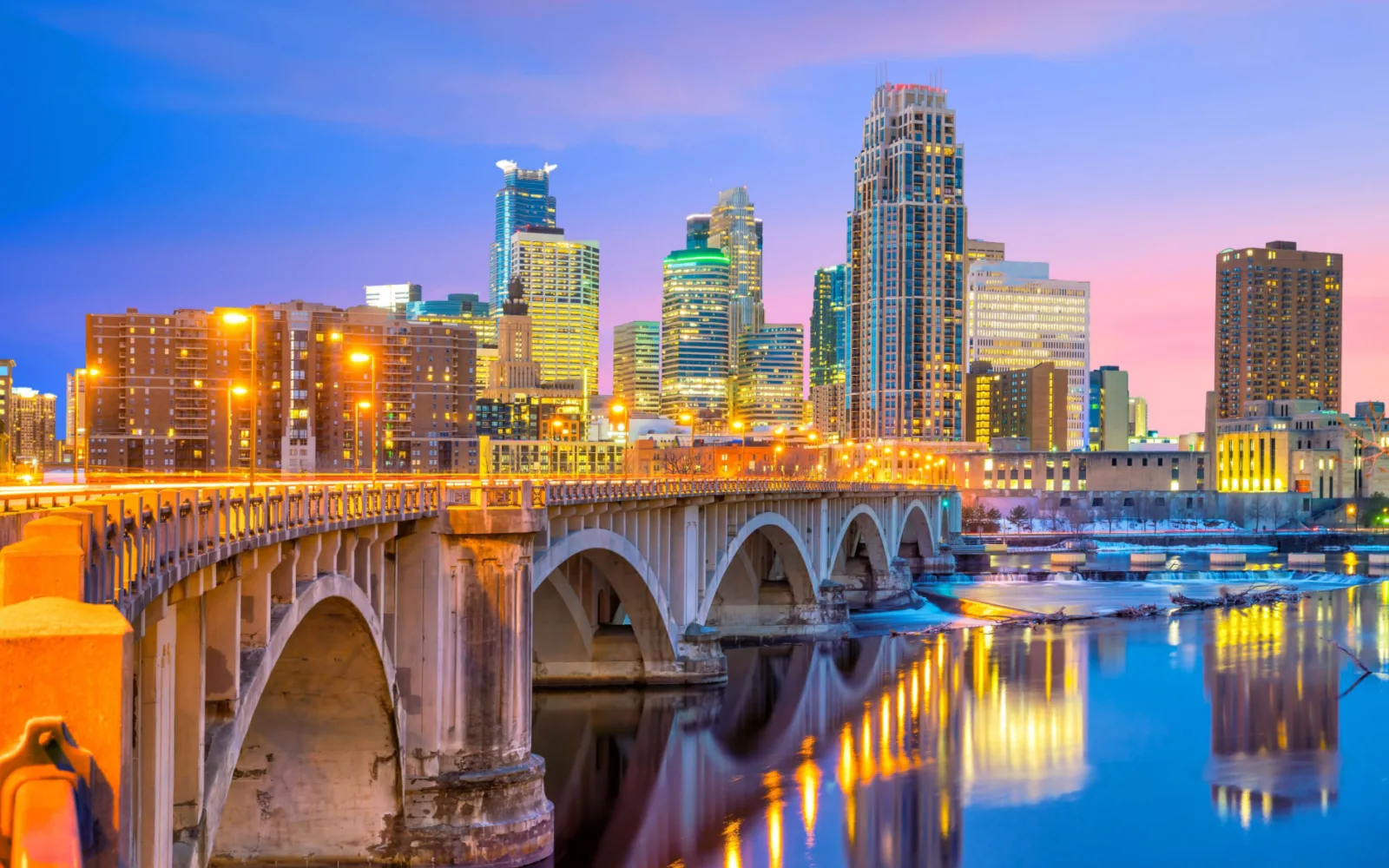Is Minneapolis safe to visit in 2025?
Minneapolis is generally safe to visit for tourists. While it has a higher crime rate compared to the national average, most crimes don’t target tourists. By taking common-sense precautions and avoiding certain high-crime neighborhoods, visitors can enjoy a safe and pleasant experience.
Minneapolis flies under the radar of many people, but one-half of Minnesota’s Twin Cities is an exciting destination for people who brave the cold to visit.
In 2017, about 33 million visitors (mostly from other parts of the United States) came to the city. Most visitors to Minneapolis come in search of the city’s exciting cultural scene. Minneapolis has many excellent galleries, live music venues, and a diverse street culture.
Minneapolis is also famous for its sports culture, and many visitors opt to catch a game and a brew while they are in town. It helps that Minneapolis is a great base for day trips to the surrounding areas, from one of Minnesota’s thousands of lakes to the world-famous Mall of America.
But while this storied city has plenty to see and do, is Minneapolis safe to visit? Here’s our take.
Is Minneapolis Safe to Visit?
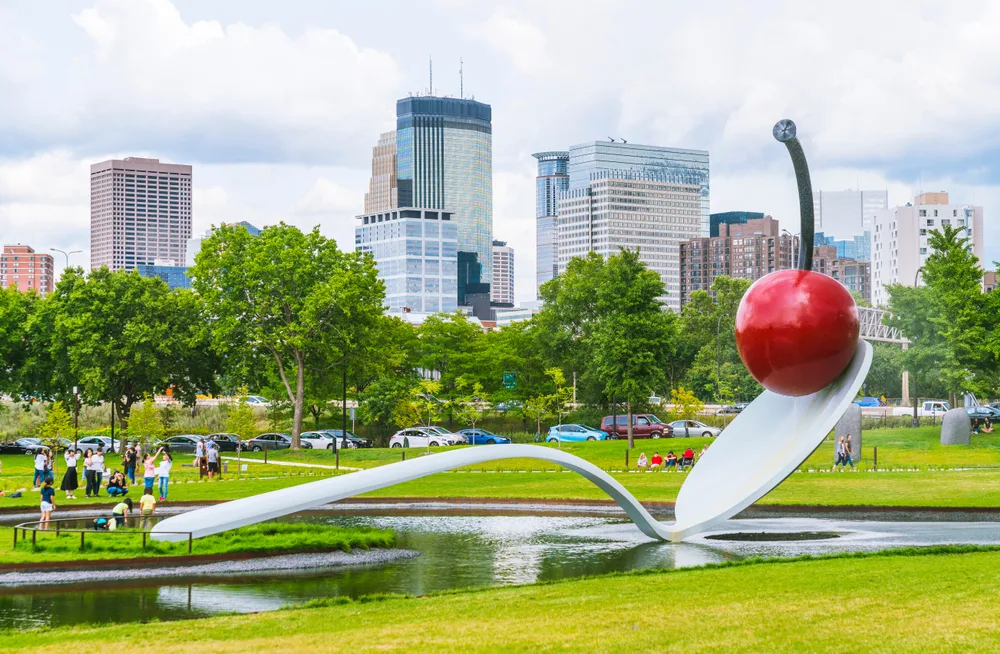
Minneapolis ,Minesota,usa,08-05-17:The Spoonbridge and Cherry at the Minneapolis Sculpture Garden/Checubus/Shutterstock
Many visitors have concerns about visiting Minneapolis because the city does have a higher crime rate than the national average. Others who followed the news in 2020 are worried about the potential for civil unrest.
However, the city is very calm now, and although it has a high crime rate, most incidents of crime don’t affect tourists. However, times have changed quickly.
In 2020, Minneapolis was the site of widespread civil unrest. On May 25, 2020, a black man, George Floyd, died after a Minneapolis police officer knelt on his neck for several minutes.
After the video of the incident was released, protests kicked off not just across Minneapolis but across the entire United States against racial bias in policing, which often leads to death.
For several nights, thousands of protesters poured into the streets of Minneapolis, and the police fired rubber bullets and tear gas at civilians, escalating the situation until a lot of damage was caused.
The news painted Minneapolis as a lawless zone during these protests, which to this day affects many people’s perceptions of Minneapolis.
However, keep in mind that local news reports are often politically charged, especially around election years. Plus, several years have passed now since the widespread civil unrest in Minneapolis. Of course, such an event leaves a long mark on local people.
Mistrust of the police is still very high, not only because of George Floyd’s murder but also because of the aggressive reaction to subsequent protests.
It is still a sensitive topic for many locals, but it shouldn’t affect your stay in Minneapolis too much. Besides civil unrest, another concern for visitors to Minneapolis is crime.
Minneapolis does have a higher crime rate compared to the national average, although it is not that bad compared to other metropolitan areas. US News & World Report gives the crime rate as 323.1 incidents per 100,000 people, which is lower than the average for similar cities.
Common crimes that people encounter in Minneapolis include:
- Pickpocketing
- Robberies
- Petty theft
- Scams
- Assault
Finally, it’s important to note Minneapolis’s wild weather. The city has some of the coldest winters in the continental United States, with temperatures often dropping below 0 degrees Fahrenheit.
Winter storms with lots of wind and snow are common. These storms can be dangerous, especially for people who are not used to snowy weather conditions.
If that applies to you, try to visit in spring, summer, or fall, and definitely don’t try to drive in Minneapolis if you visit in winter and are not used to driving in blizzards.
Crime in Minneapolis
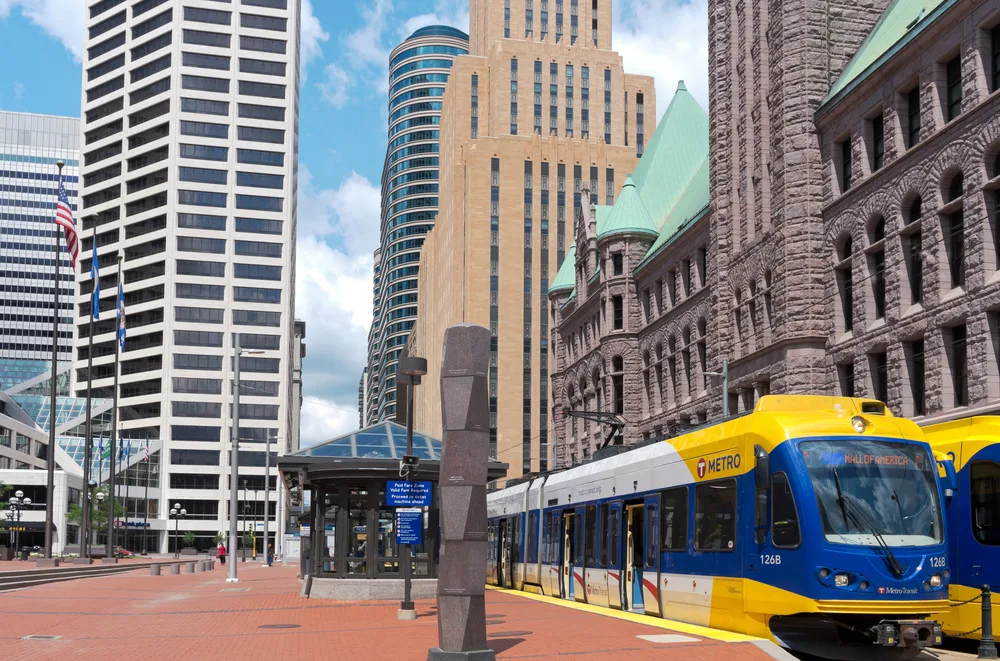
MPLS, MN/USA – JUNE 28, 2015: Central business district of Minneapolis. Together, the twin cities of Minneapolis and St. Paul anchor the second largest economic center in the Midwest behind Chicago/Joe Ferrer/Shutterstock
Crime is the biggest reason why people are afraid to visit Minneapolis. It’s true that the city has a higher crime rate than the national average. Property crimes are much more common than violent crimes.
According to official Minneapolis crime data, the first two and a half months of 2023 saw 1,534 assaults, 411 cases of burglaries, 13 homicides, and over 2,000 larceny or theft offenses.
Those are sizable crime numbers for just a few months, but remember that Minneapolis is a large city. To get a better feeling for what those numbers mean, it might help to compare Minneapolis to other cities.
According to NeighborhoodScout, the crime rate in Minneapolis is 13.42 incidents per 100,000 people. Of the total crimes, 23% were violent crimes, while the rest were property crimes.
The most common violent crime was assault, at 52.6% of the total violent crime rate, followed closely by robbery. The most common property crime was theft, followed by motor vehicle theft.
Residents of Minneapolis have a 1 in 22 chance of becoming the victim of a property crime. Unfortunately, Minneapolis’s murder rate is greater than the national average, as is the property crime rate.
There are a few reasons why the crime rate is so high. The adversarial relationship between police and the population, making people less likely to go to the police when they are victims of a crime and making the police less likely to help people from certain backgrounds, certainly contributes.
Minneapolis is also one of the most economically unequal cities in the nation, with one of the biggest racial wealth gaps between the earnings of black and white families.
The inequality and poverty that many people are forced to face contribute to the crime rate. However, not all is bad news when it comes to Minneapolis and crime.
Despite many worried news reports about violent crime spikes, crime actually decreased in 2022. Hard work by community organizers and violence interrupters helped stem the tide.
Petty Theft
Despite breathless headlines about the spate of violent crime in Minneapolis, most visitors have to worry about something far more mundane — petty theft.
Petty theft is a problem worldwide, including in many popular tourist destinations and probably your hometown too. Pickpockets in Minneapolis take advantage of distracted tourists and relieve them of their valuables.
Even though you may want to look around and take in all the wonderful sights of Minneapolis, make sure at least part of your attention is on your surroundings. Keep valuables in a safe place, such as a front pocket, not a back pocket.
Purse snatching is a far more common form of petty theft than pickpocketing. Hundreds of purses are snatched in Minneapolis every year. If you have an expensive designer purse, you might want to leave it at home.
Try to carry a smaller purse that is easier to hold on to or a cross-body bag that will fit securely over your body and is harder to take than a shoulder bag.
Another form of petty theft that occurs in Minneapolis is bike theft. The city is excellent for cycling, but that also attracts thieves who like to relieve residents of their bicycles.
This will probably affect residents more than visitors, but if you are renting a bike or bringing your own to take advantage of the cycling trails around Minneapolis, make sure that you bring a great lock as well.
Armed Robbery
For most visitors, the high violent crime rate in Minneapolis is a major source of concern. Most incidents of violent crime, from assault to murder, don’t affect visitors because they are confined to certain neighborhoods and are usually the result of disputes between people who know each other.
However, armed robbery incidents sometimes affect tourists in Minneapolis. Robbers will sometimes strike at ATMs. Be careful if someone is standing too close to you when you are taking out cash.
They might try to snatch your cash or use a weapon to force you to withdraw more money and hand it over. Always use ATMs that are located inside bank branches with security cameras instead of unsafe street ATMs.
Trust your instincts if the situation around an ATM feels sketchy, and move on to a different ATM. You can do a lot to minimize your risk of armed robbery by changing the way you travel.
During a recent spate of attacks in Minneapolis, law enforcement noted that almost all victims were walking alone at night, often intoxicated or distracted by their phones.
Make sure that you never venture out alone after dark. If you head to bars, take a taxi home instead. Be careful not to get too drunk, and stay alert when heading home.
Avoiding Bad Areas
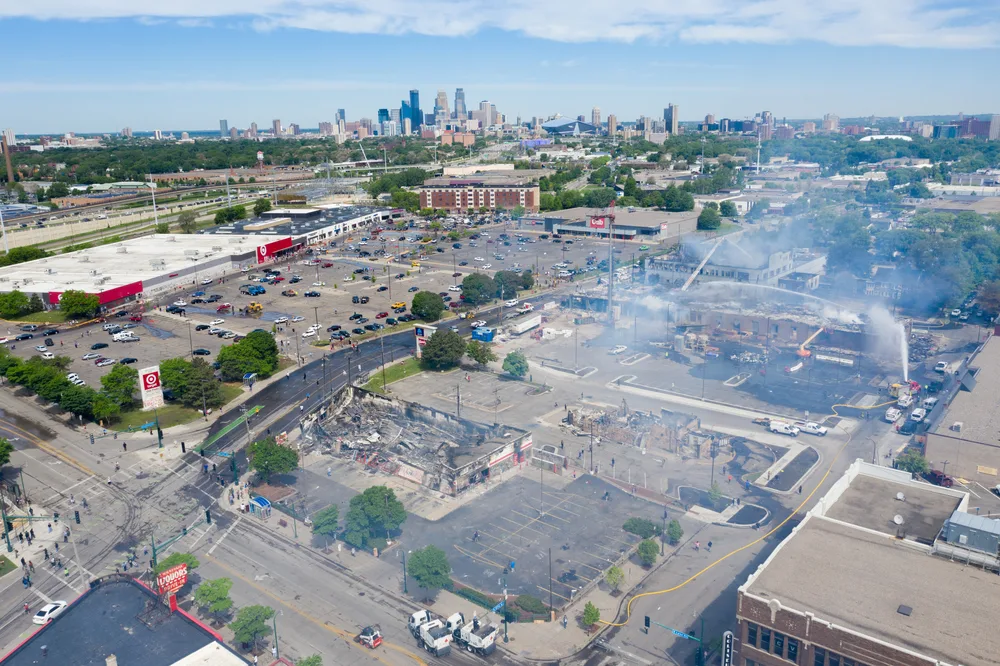
Minneapolis, MN / USA – May 28 2020: Aftermath of Riots Fueled by the Death of George Floyd Under Police CustodyJusin Berken/Shutterstock
One thing to keep in mind about the crime rate in Minneapolis is that it varies drastically from neighborhood to neighborhood.
Certain neighborhoods have very high crime rates, which in turn drives the entire city average up, while other neighborhoods see much fewer incidents. Of course, you should be vigilant no matter where you go because criminals can easily move around the city and attack everywhere.
The Minneapolis police also publish a handy map of crime incidents. The one region everyone tells visitors to avoid is North Minneapolis. North Minneapolis has a very high crime rate and is the most dangerous area in the city.
Most residents who don’t live in the area avoid it, and so should visitors. One intersection slightly north of downtown Minneapolis is at the corner of West Broadway and North Lyndale Avenue.
This intersection got nicknamed “murder station” because of the very high rate of violent crime around the corner. It definitely seems like a place you should avoid.
Other neighborhoods with elevated crime rates include Hawthorne, East Phillips (a neighborhood southeast of downtown with an extremely high violent crime rate), and Ventura Village.
Dangerous neighborhoods are, as a rule, located far away from tourist attractions, so they are hard to wander into by accident. Trust your instincts and also ask a local, for example a hotel receptionist, for any tips.
Things to Consider
Here are some more tips for visiting Minneapolis:
- Take local news sources about crime with a grain of salt. Before election cycles, reporting about crime always escalates, even if crime rates aren’t actually rising.
- Don’t underestimate the Minneapolis winter. Bring your heaviest winter coat, many layers, good winter boots, and invest in some hand warmers as well. Better yet, save your visit for slightly milder weather.
- “Minnesota nice” is a stereotype based on truth, and you’ll find that people are generally friendly and willing to help visitors.
- Even parts of Minneapolis that are safe during the day can attract bad crowds at night, so avoid traveling alone at night.
Frequently Asked Questions
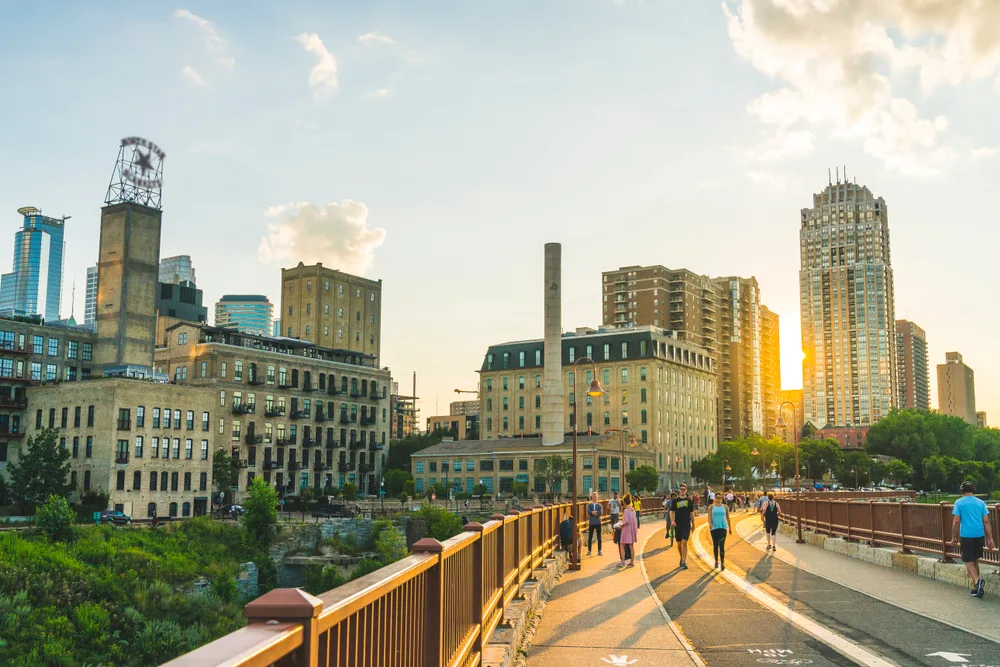
Checubus/Shutterstock
Still have questions about visiting Minneapolis? You’re not alone. Here are some other questions that people wanted to know about visiting here:
Is Minneapolis worth visiting?
Minneapolis is absolutely worth visiting if you are interested in culture, art, live music, sports, and nature — so basically — if you have any interests. It has a lot to offer and isn’t very large or expensive, making it perfect for a weekend getaway.
Is Minneapolis safe to walk at night?
Minneapolis is generally not safe to walk at night except for certain busy downtown areas. Take a taxi when moving around at night, and if you have to walk or take public transportation, go in groups.
Where is it safe to stay in Minneapolis?
Downtown is one of the best places to stay in Minneapolis. Not only are you close to all the attractions, but it is also one of the safest neighborhoods.
Is it safe to drive in Minneapolis today?
The answer to this question obviously depends from day to day. During the winter, storms often make it dangerous to drive in Minneapolis. There are local alerts about driving conditions that update daily, but if you are traveling in the winter, avoid renting a car.
Are people in Minneapolis friendly?
Yes, people in Minneapolis are friendly! The stereotype of “Minnesota nice” exists for a reason. People are generally polite, even to strangers.
So, Should You Travel to Minneapolis?
Minneapolis may have an elevated crime rate, but violent incidents are confined to certain neighborhoods. As long as you take common-sense precautions, such as not walking alone at night, you should have a great time in Minneapolis. Happy travels!



